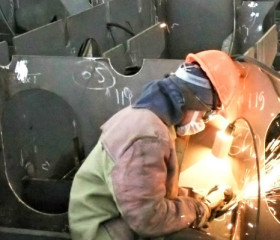
For someone running a small to medium sized business the letters SMS, standing for safety management system can be a forbidding acronym. The SMS for a large and complex organisation can be a document of many thousands of words over hundreds of pages, prescribing a bewildering array of meetings and procedures. But the power of SMS as a concept means it is scalable. A small organisation can reap safety and business benefits from a much simpler SMS. All you have to do is stick to it.
An SMS has four principal components:
- Safety Policy – setting your safety goals
- Safety Risk Management – through reporting, analysing and responding to safety concerns.
- Safety Assurance – measuring your performance and making sure that safety measures are being done.
- Safety Promotion – keeping the emphasis on safety.
Your organisation’s SMS will be at the core of its safety culture and will define how it intends to manage safety as a part of its business management activities. This will eventually become the normal way people do their jobs.’
And there are specific business benefits. ‘It does make your workplace more efficient, cost-effective and keeps your contracted customers happy.
At Work Safety Hub, we say members of a well-run organisation are talking about safety every day – or should be. ‘All the SMS does is document those discussions and ensure they get followed up. It means you put barriers in place to prevent repeat occurrences.’
Confidentiality is unlikely in a small organisation but communication and flexibility are greater. ‘If I came into the workplace at night and tripped on a toolbox left on the floor in the dark, because we’re a small business I would know whose toolbox it is,’ ‘I would speak to them the next day and say “don’t leave your toolbox lying round,” and they’d say “I never thought of that”. Document that conversation, and add what has been done to stop it happening again and you’ve got how an SMS works.’
Over time the data generated by an SMS produces a picture that could not have been seen if safety management remained informal. ‘When the auditor comes, they see you have a procedure to address a hazard, and they’re happy.’
We have two tips for organisations taking on SMS for the first time.
‘Number one, you have to scale your SMS to the size of your organisation. We are not BHP and we don’t need BHP’s SMS. But we need a process, to document and deal with the incidents and issues that come up in operations.
‘Number two you’ve got to apply the KISS principle: Keep it simple. Remember you’re probably already doing many of the things SMS requires. Think of a social barbecue where your older workers are talking to your younger team members, over some sausages and steak, about, for example chemical hazards. For a small organisation, all you have to do is enter notes of that conversation into the record, and follow it up, and you’ve contributed, in a real way to your SMS.’
Work Safety Hub has extensive online resources to help with understanding, setting up and running safety management systems.


